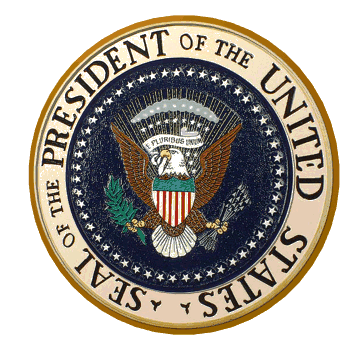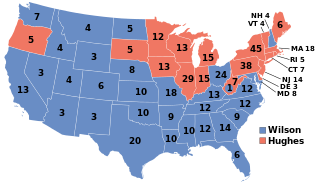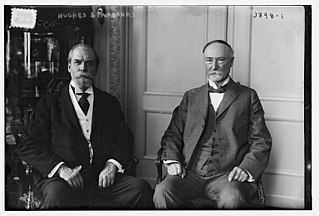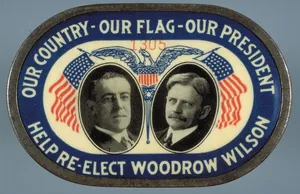 TheUSAPresidents.com
TheUSAPresidents.com 
 TheUSAPresidents.com
TheUSAPresidents.com 
 We have pages on every election!
We have pages on every election!

AndyHogan14, Public domain, via Wikimedia Commons
The 1916 election took place on Tuesday, November 7, 1916.

Charles Hughes (left) for president, Charles Fairbanks (right) for vice president

Woodrow Wilson for president, Thomas Marshall for vice president
Allan Benson for president, George Kirkpatrick for vice president
Frank Hanly for president, Ira Landrith for vice president
At first, Woodrow Wilson's presidency was a very standard one. However, this would change when World War I broke out in Europe. Wilson kept a policy of neutrality, especially as more Americans saw the horrors of the war, such as the trench fighting and later, the use of chemical gases. The Democrats used this to their advantage, using the slogan "He kept us out of war". Hughes pushed back by saying that Wilson was not getting the United States prepared for a war situation, though not stating that the United States should, could or would join the war. The key in this election was that most people did not want to be involved in the war, meaning that Hughe's statements may have made many Americans uneasy. Still, though, the Democrats were the underdog party, and the Republicans were still massively popular, and had been united since the last election.
The electoral college remained at 531 electoral votes; 266 needed to win. 18,536,585 people voted in this election.
Bain News Service, publisher, Public domain, via Wikimedia Commons
TheUSAPresidents.com
About Us Legal Political policy Reliability
Information on this site should not be plagiarized. This site is intended for hobby purposes, not commercial. Visit here for more information.